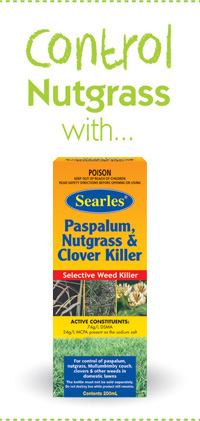What does Nutgrass look like and how to control it?
Nutgrass is a persistent member of the sedge family and has managed to infiltrate nearly all cultivated gardens. It emerges and grows rapidly during the warm growing seasons and seems to have no boundaries for soil, pH or climate. It is a weed and bane of a gardeners life on a global scale!
Recognising nutgrass weed
Nutgrass can be recognised by the deep green, strappy foliage up to forty centimetres that rapidly appear from nowhere in lawns and garden beds. This is followed quickly by flowering heads that resemble grass, but thicker. By this time, the underground “nuts” or bulbs are formed in quick succession to allow the species to colonise large areas.
How to control nutgrass in lawns
Complete control of this problematic weed can never been fully guaranteed, but careful and complete removal of the plants (including underground nuts) will help. Selective herbicides for members of the sedge family are now available for use, but repeat applications are advisable. Mulching does not seem to help, neither does smothering with thick sheets of cardboard or even old carpet as it can easily grow through these. Aiming to weaken the plants with regular applications of herbicides are often the best options in helping to control its behaviour.
Control nutgrass with repeat applications of Searles Paspalum, Nutgrass and Clover Killer.
Note: This product is only suitable for Couch (not QLD Blue Couch), Bent and Fescue lawns.
Click to view our Searles Lawn Weed Control Chart for the right lawn weed killer to use for your lawn type.

|

